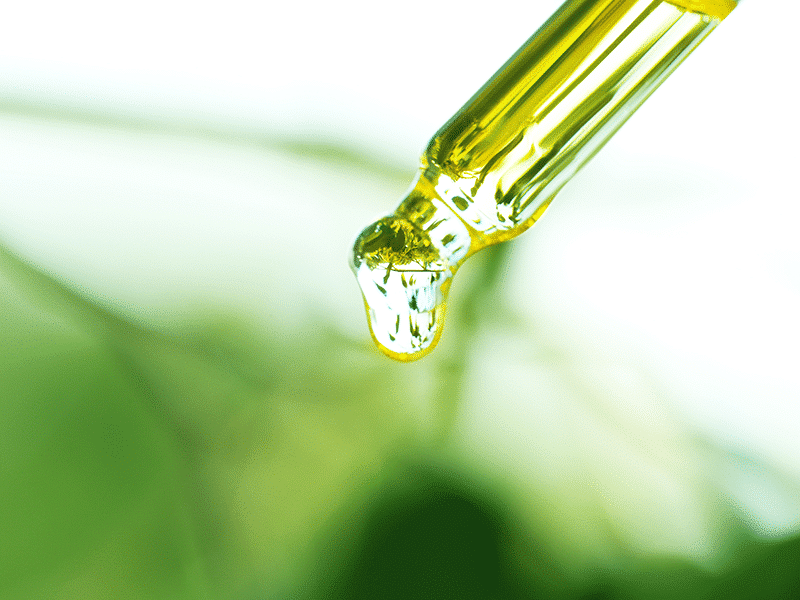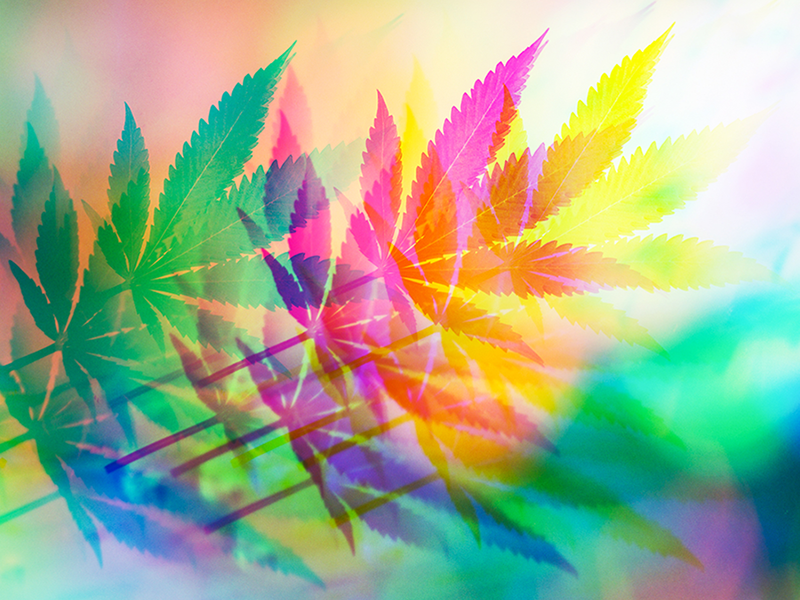Project CBD: Welcome to another edition of Cannabis Conversations. I’m Martin Lee with Project CBD and today we will be speaking to Dr. Ethan Russo, noted neurologist, a researcher in the cannabis field for many years, and author of quite a few peer-reviewed scientific papers. Welcome Ethan.
Transcript
Russo: Thank you for having me.
Project CBD: Dr. Russo I recall reading your articles in various scientific journals about CBD – cannabidiol – many years ago, and yet today now we’re in the midst of a CBD explosion. It’s become a huge fad, a global phenomenon. How, as a researcher who is looking at CBD much earlier than the culture has embraced it – how do you relate to this cultural phenomenon?
Russo: I was aware of the psychopharmacological effects and other effects of cannabidiol from the early 70s. That was one of my interests in my early education. But at that time it was relegated to the back seat, at best, in relation to THC, which garnered all the attention. Certainly in medical school there was no attention to this topic at all. But, as developments accrued and there was the discovery of the endocannabinoid system it rekindled my interest in it in the mid 90s when I really delved back into the pharmacology of cannabis again.
It was apparent to me that a very important pharmacological agent had been overlooked – that being CBD. I was then quite aware of its potential medically, which had been, again, largely forgotten outside of Professor Mechoulam and his acolytes and perhaps the Brazilians who had studied the effects as an anticonvulsant. When I began my work with GW Pharmaceuticals in 1998, they had been prescient to realize that this was a very important component of a properly constituted cannabis preparation to be used therapeutically. So, it was like an equal partner to THC in their development program. And at that time the company was also funding basic research to investigate additional attributes of CBD, particularly as an anti-inflammatory and as an analgesic, a painkiller, but particularly its ability to reduce the side effects of THC. So at that time, along with interest in other components, I began writing about CBD, probably first in 2001.
Project CBD: Did you ever imagine it would get to this point where CBD would be this cultural artifact?
Russo: Well I always hoped so. I think that it was well-deserved status to finally be recognized for what it could do. At this point, however, I think certainly the hype has exceeded its real capabilities. Coupled with the fact that there’s so little regulation in the marketplace, I think it’s just incredibly confusing for the potential consumer that might be trying to get a proper cannabidiol preparation.
Project CBD: So, cannabis has been described by Dr. Mechoulam in Israel as a “medicinal treasure trove.” I assume he’s not just talking about THC and CBD, two of the major components of the plant. What else is in the plant that we should be paying attention to, and what else might become available to patients and consumers as something they can use therapeutically?
Russo: Well, we’re seeing history repeated. All of the attention has been on THC and CBD to the exclusion of what may be as many as 148 different cannabinoids that the plant produces, which seemingly are unique to it, although we’ve got a couple of exceptions from nature. But, on the horizon certainly I think cannabigerol which is the parent molecule to THC and CBD –
Project CBD: CBG.
Russo: That’s right. Cannabigerol (CBG), emphasis on the “G” as opposed to the “D”. I think this has great potential. So this is not an intoxicating agent. Rather, it does have a strong anti-anxiety effect and for people who have had access to it, this is an almost universal describer of the effects. Beyond that, it seems to be a powerful antibiotic that can work on bacteria that are normally resistant to antibiotics, especially Methicillin-resistant Staphylococcus aureus, which has caused some hospital-acquired infections.
Project CBD: And deaths, as far as I know.
Russo: Absolutely. Particularly in the immunocompromised patient, this is potentially fatal. Additionally, it works on a variety of cancers, especially prostate cancer, where it seems to have a specific effect, which really could be leveraged into an important medicine. Prostate cancer is one of the main killers of older men. So, it’s of interest to us, to be fair, because of our age demographic certainly. It’s an extremely promising agent. Finally, after again being ignored for decades, the acid cannabinoids, the form that are actually produced in the cannabis plant.
Project CBD: So you’re talking about CBDA and THCA. What is the “A” in this context in these molecules?
Russo: That’s right: cannabidiolic acid and tetrahydrocannabinolic acid. Those are the precursors that are made in the plant that normally will produce THC and CBD through a process called decarboxlyation, loss of a CO2 molecule, which normally happens by heating, either by smoking, vaporizing, baking, or in the lab. These [cannabinoid acids] were relegated to be inactive in the past, but again, they just weren’t looking in the right places, or didn’t have the right tools at the time. About 15 years ago, THCA was shown to have activity on tumor necrosis factor-alpha (that’s TNF-α for short).
Project CBD: And what is that exactly?
Russo: So, this is an important mediator of autoimmune effects. It’s important in diseases like multiple sclerosis, rheumatoid arthritis, ulcerative colitis, and Crohn’s disease; probably a lot of other autoimmune diseases that we’re seeing increasingly in our populations. As if that weren’t enough, though, a couple of years ago a group in Spain identified this as seemingly the most powerful of the cannabinoid agents on another receptor.
Project CBD: This, now we’re speaking of THCA.
Russo: Correct. Still on THCA. So THCA was shown to be an agonist, a stimulator of the PPAR-gamma receptor.
Project CBD: And what is that exactly?
Russo: PPAR-gamma is a nuclear receptor. It affects gene transcription – so how the inner workings of the cell really work. Now that sounds scary, although there are a lot of very important potential therapeutic effects from that, including helping with weight loss, the metabolic syndrome, Type 2 diabetes, and additionally again, treating cancer. So, what we’re seeing now is the science is actually catching up with people who have been using raw cannabis, particularly THCA, to treat a variety of conditions. And we knew before that a lot of patients with autoimmune conditions were getting benefit from raw cannabis products.
So, the other side of the coin is CBDA, cannabidiolic acid, the precursor in the plant to CBD. One of the effects of CBD that was discovered in 2005 by my colleagues at the University of Montana was that CBD exerts some of its effects, like on anxiety, through a different receptor, the serotonin 1A receptor – 5HT1A. That’s been fascinating and very important, but in fact CBDA works on the same receptor but it’s 100 times more potent. This leads me to believe that, again, this could be leveraged as an anti-anxiety agent, but also in treating nausea with tiny doses that would just present no likelihood of any toxicity at all. That one has been looked at in animals, but no clinical trials in humans. So, we’ve got a lot of work to do yet.
Project CBD: And just to clarify: When we’re speaking of the acid versions of the cannabinoids, even THC, these are all non-intoxicating?
Russo: That is true.
Project CBD: So why is THCA non-intoxicating, and yet THC you get high from it?
Russo: It just has to do with whether they bind to the CB1 receptor, which is the receptor in the brain that mediates intoxication in this instance – I never liked that word – because the CB1 receptor is the target for getting high. And because neither THCA or CBDA lodge there with any affinity, they don’t produce this kind of intoxication.
Project CBD: So, what word would you prefer rather than intoxicating or non-intoxicating? Is there a better phrase for this?
Russo: They would string together six syllables. I guess I would just say “active on CB1.” And that would explain a lot of other activity too, because to say that CB1 only is responsible for intoxication hardly does it justice to all its therapeutic effects. But, all of this indicates to me the importance of whole cannabis preparations, because basically cannabis is like a drugstore in one preparation, and so its effects are really going to depend on the ratios of the various components. We see a lot of companies invested now in single components, what people call isolates, CBD isolates, THC isolates, and these can be therapeutic. But to me they’re really lacking in having the full attributes that we can really achieve with a properly constituted cannabis preparation. THC on its own is a lousy drug. It’s very hard to tolerate, it’s very disorienting. It’s only with the addition of CBD that modulates those effects, or the terpenoids, that we really get an acceptable preparation that can do a much better job.
Project CBD: So, what about THCV and CBDV? What does the “V” stand for in these compounds, and what are the implications? What do they do therapeutically?
Russo: “V” stands for varin. And this is just a way of saying chemically that there’s a 3-carbon side chain instead of a 5 with THC and CBD. THCV is usually seen in small amounts in cannabis from southern Africa – very small amounts. Recently there’s been selective breeding to get much higher amounts of it, and it’s a fascinating compound. Contrary to THC, which is a weak agonist at the CB1 receptor, THCV is what’s called a neutral antagonist. So it means it weakly inhibits that receptor. So, when it’s combined with THC, what we hear experientially from people who are using such a product is that the high is clearer and more manageable.
We know that THCV, which has been tested in animals and humans, has a lot of other beneficial effects, again particularly for the person who may be obese, have the metabolic syndrome, or Type 2 diabetes. And it actually benefits the laboratory abnormalities of people with those kinds of problems, as well allaying hunger and leading to some reasonable degree of weight loss. But, this is without the terrible side effects that were seen with some of the prior weight-loss drugs like Rimonabant, which was yanked off the of European market and never approved by the FDA. It is different in its effects. It was what was called an inverse agonist.
An inverse agonist actually reduces the activity of the whole system, so it’s knocking down the benefits of the whole endocannabinoid system. And as many of us predicted years ago, that isn’t a good thing. That produces anxiety, it lowers seizure threshold making seizures more likely, it could increase the risk of cancer. Those kinds of drugs have dropped out of pharmaceutical research because of the side effects.
Project CBD: And Rimonabant – that was a cannabinoid-based diet pill, as it were, but it was thought to be.
Russo: Sure.
Project CBD: And a research tool, I would imagine.
Russo: It highlights the dangers – that was a synthetic, a very powerful inverse agonist. But it was one of those situations until it was really on the market, they really got stronger signals of these serious side effects. There were even a couple of cases of de novo multiple sclerosis where it developed in someone on this drug who had shown no signs of it before. Very scary stuff. It’s another instance where it’s clear that nature does it better.
So, going back to THCV, that’s not all. Basically it has a number of other interesting properties. In contrast to Rimonabant which could cause seizures, THCV is an anticonvulsant. Additionally, it seems to have a strong effect on neuropathic pain, nerve-based pain. That’s a really strong therapeutic profile.
Project CBD: Last question, coming back to CBD, but the varin version of CBD, CBDV, what do we know about that, what is its potential?
Russo: Like CBD, it seems to have an anticonvulsant effect, benefit on seizures, but a different type. Whereas CBD works in general pretty well, CBDV seems particularly good for what are called focal seizures or seizures of partial onset, that might be generated in one area of the brain, for instance an area that’s damaged after head injury. Really it looks like the combination of the two, which we see in some chemovars of cannabis, might be a really good place to start for that kind of treatment.
Project CBD: There are lot of other aspects of the plant I’d love to ask you about, but I don’t think we have time. We’ll have to do it next time. So I thank you Dr. Ethan Russo for joining us today on Cannabis Conversations.
© Copyright, Project CBD. May not be reprinted without permission.
Recommended Readings
Dosing THCA: Less Is More
Discover the clinical and laboratory research on THCA for epilepsy, chronic pain, digestive disorders, and more.
CBG! A Compound With Intriguing Medical Potential
What do we really know about “the mother of all cannabinoids”?
CBN for Sleep: Fact or Fiction?
A molecular biologist deconstructs a cannabis industry myth.




